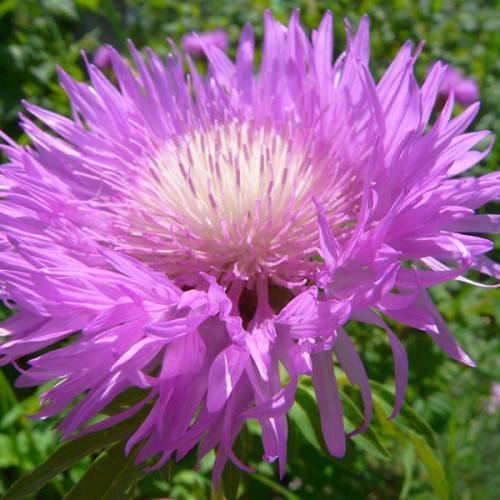
psephellus
Psephellus pulcherrimus
Cycle:
Herbaceous Perennial
Watering:
Minimum
Hardiness Zone:
4 - 8
Flowers:
Flowers
Sun:
Full sun
Growth Rate:
Low
Maintenance:
Low
Salt Tolerant:
Yes
Care Level:
Medium
watering
Psephellus pulcherrimus should be watered generously in the summer and sparingly in the winter. In general, water once per week in the summertime. However, if the soil is dry to the touch, water the plant deeply. During the winter, water every 2 to 3 weeks, again adding more when the soil is dry to the touch. Routine and effective watering habits are essential in ensuring healthy growth of Psephellus pulcherrimus.
sunlight
Psephellus pulcherrimus (commonly known as a sun wildflower) is a flowering plant belonging to the Asteraceae family. This plant species thrives best when provided with ample and constant direct sunlight throughout the day. Ideally, it should receive at least 6 hours of sunlight on a daily basis, preferably during the morning and mid-day hours. It is also important to note that too much direct sunlight and heat can cause the plant to become stressed and dry out, so additional measures such as mulching or providing the plant with shade during extreme hot weather may be necessary. Additionally, it is best to avoid strong winds and over-watering, which can further damage the plant. The plant species is best grown in full sun, so ensure it is planted in a spot that gets plenty of direct sunlight. During stressful weather conditions such as heat waves and droughts, it is best to provide the plant protection and/or shade to ensure its health. Lastly, it is important to monitor the water levels of the plant and soil to make sure the plant has enough water to stay hydrated.
pruning
Psephellus pulcherrimus should be pruned moderately in spring and summer. In the spring, it is recommended to prune selectively, removing any dead or damaged branches, as well as thinning out any excess foliage. In the summer, pruning should be kept to a minimum, only removing any dead or damaged branches. Pruning should be done carefully and monitored regularly to ensure adequate growth and health of the plant.
